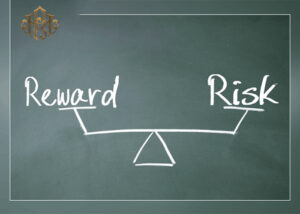
Close



Professional traders always try to make the most profit in each trade and at the same time do not lose their capital as little as possible. For this purpose, they use the risk-to-reward ratio to carefully evaluate the profit and loss of each transaction and make decisions based on it.
To better understand the concept of risk-reward ratio, we can give an example outside the financial world. Suppose you are offered to enter the bird cage and feed them in a zoo in exchange for 10k. This only comes with the risk of legal action. But if instead of birds, you want to feed lions and receive 20k for this work, the risks increase greatly and you may even risk your life. If we compare the risk-to-reward ratio of these two tasks, we find that the first task, that is, feeding the birds, is less risky, and the second task, that is, feeding the lions, is more rewarding.
If you are not of a nature to take risks for profit, you can go to the birdcage and accept the risk of legal action. But if you are a high risk taker, you may decide to go to the lion’s cage and accept the risks for the money received. Ultimately, your decision depends on your level of mastery and risk tolerance.
With this example, you can now better understand the concept of risk-reward ratio. Some low-risk trades, such as feeding birds, are low-risk and low-reward, while others, such as feeding lions, are high-risk, high-reward. Depending on your strategy and risk-taking level, you can decide whether to enter a trade using the risk-reward ratio.

To calculate the risk-to-reward ratio of a transaction in the digital currency market, you must first determine the profit and loss limits of the transaction. Then, you divide the loss limit by the profit limit to get the trade’s risk-to-reward ratio. This ratio shows how many units of profit you can get for every unit of risk you accept for trading.
For example, suppose a trader plans to invest in a cryptocurrency for the long term. He has set his profit limit at 15% and his loss limit at 5% of his capital. By dividing the loss limit by the profit limit, the risk-to-reward ratio is equal to 0.33.
This ratio means that for every unit of risk that you accept in this transaction, you may gain about 3 units of profit. In other words, if the trader loses one unit in this trade, he may gain three units of profit.
To reduce the risk-to-reward ratio of a cryptocurrency portfolio, you can place the stop loss closer to the entry point of a trade. But it is recommended not to put the loss limit close to the entry point unknowingly and to always investigate this issue with the technical analysis of cryptocurrency charts.
The reward-to-risk ratio is actually the opposite of the risk-to-reward ratio, in that we divide the expected profit margin by the loss margin to get the reward-to-risk ratio. In other words, this ratio shows how many units of profit you can get for every unit of risk you accept for a trade.
For example, in the mentioned example, if the expected profit limit is 15% and the loss limit is 5% of the capital, the reward-to-risk ratio is equal to 3. This means that for every unit of risk you accept to trade, you can earn about 3 units of profit. For example, if a trade loses one unit of capital, three units of profit may be obtained.
Capital management and the ratio of reward to risk. Capital management training is one of the most important elements for obtaining sustainable profits in the financial markets. This principle says that you should manage your capital in such a way that the risk of trading is always reduced and at the same time you get higher returns from your trading. For this purpose, it is necessary to use appropriate trading strategies and have sufficient knowledge in the field of capital management.
Determining risk: Before each transaction, you must determine the amount of risk required and keep this risk constant to avoid excessive excitement and unnecessary changes.
Determining return: The rate of return of a capital is determined based on various indicators. The more knowledge and experience you have in the field of trading, the more profitable you can get from your trading.
Volume of transactions: increasing the volume of transactions can increase the risk. To reduce the risk, it is better to divide the trades between several opportunities and reduce the volume of trades.
Therefore, observing the ratio of reward to risk is very important and should always be considered to ensure sustainable profitability in your transactions.